Goldfish for Luck, the Wild Olive for Love, and Nuts to Problems
Whether pagan or Christian, Jew or Muslim, Hindu or Buddhist, atheist or Pentecostal, Confucian or Zoroastrian, spring is the time when the nose on each human face wakes up to smell the roses. Look close, and you will find those noses sniffing around among the hyacinths, the jonquils, sweet peas, gardenias, lilacs and the blooming dogwoods too.
On Thursday, March 20, the sun will cross the Earth’s equator, ushering in the vernal equinox. At that time, not only will spring’s handmaidens burst on the scene dancing an ecstatic dervish in the fecund garden of earthly delights, but the moment marks the first day of the year on the tradition-infused Persian calendar.
The Persian New Year – paired with spring’s enthusiastic wake-up call – is a very old tradition. And like all very old traditions across the world, the Persian New Year, called Nowrūz (no-rooz), shares many customs in kind with other well-aged cultures.
A good example is the painted egg.
Decorating eggs did not begin in your American grandmother’s kitchen. Getting the family together to paint eggshells was borrowed by the early Christian religion as one of the rituals practiced at Easter; however, the happy home project has its origins in the ancient Persian New Year tradition, a rite of spring centered on the notion that striking up a friendship with the forces of Nature is a smart move.
The Persian New Year comes packed with traditions that win our attention and invite deeper investigation. We might wonder at its impressive longevity, wonder how its redoubtable legacy found its way into contemporary Western culture.
At the core of Nowrūz there are 12 days officially designated for celebration, but the Persian-Iranian New Year activities begin several days prior to the spring equinox, with jumping over bonfires and eating ajil, a mixture of dried nuts and fruit that, according to tradition, has the power to solve all your problems.
At the end of the 12-day run, a thirteenth day is traditionally tacked on to the holiday so that everybody can pack up and go on a picnic. Once outdoors, with blanket spread alongside a lake or babbling brook, it is traditionally acceptable to tell big whoppers, exaggerated fish tales and bald-faced lies to everyone who wanders by. In other words, the thirteenth day of Nowrūz is the companion piece to our modern April Fool’s Day.
But what else goes on during the days running up to the official start of the Persian New Year? First and foremost, you better dig out the mop, the broom and that bottle of Mr. Clean that has been ignored all winter because it’s time for khane tekani, or to shake up the house.
The custom of giving the house a serious spring cleaning was suggested in ancient times by the Persian sage philosopher, magician and anti-dust activist Zoroaster as a way to sweep away the mistakes of the past and start again with a clean slate. Again, the yearly ritual of spring cleaning is a much-shared tradition, receiving a thumbs-up by winter-weary cultures worldwide.
With attic-to-basement scrubbing done, and everyone in the family now fresh from the shower and spanking clean, what comes next?
Just as I remember Easter as the time my mother hustled everyone – me, my brother, my sister and my grumpily protesting father – into the Ford to tool down to Foley’s so that the girls could be outfitted in pretty frocks and the guys in new suits, the Persian New Year cannot proceed until all celebrants are garbed in new clothes.
Excitement is building. Just before New Year’s Day, the matriarch of the house comes home with arms laden with bouquets of hyacinths, pussy willows and tulips. The floral buffet nudges the soul awake.
A tablecloth, called the sofreh, is produced and will either be spread on the floor or upon a table. The cloth will then be covered the traditional haft-seen, or seven items that begin with the letter “s” in the Farsi language.
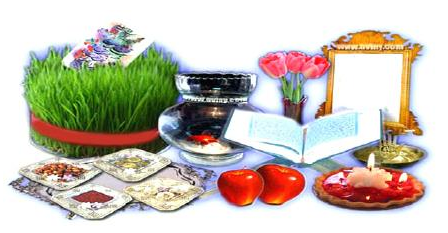
The items might include: (1) an earthenware bowl containing sprouted wheat, barley or lentils tied with a red ribbon, symbolizing rebirth, (2) apples, for beauty, (3) garlic, for health, (4) sumac berries, for the color of the sunrise and symbolizing Good casting out Evil, (5) vinegar, for wisdom and patience, (6) a sweet, creamy pudding, for affluence, and (7) fruit from either the wild olive or lotus tree, for love.
Other symbolic items you might notice in the arrangement: A mirror so that a person can take a good, honest look at herself; coins to ensure prosperity; a hyacinth plant, decorated eggs, lighted candles for clarity; a bowl with a goldfish or two to bring good fortune in the New Year; a holy book or poetry book; and small clay figures of plants and animals to remind us of the beneficence of Nature.
During the 12 days of the Persian New Year, people will visit the homes of relatives and friends – just for 30 minutes, no more, no less. They will drink tea, eat sherbet and probably take a few more handfuls of problem-solving nuts and fruit.
Returning home, the family will partake of sabzi polo mahi, a dish of rice, green herbs and fish (photo below); dolme barg, grape leaves stuffed with meat and rice; a traditional omelet made with spinach, spring onions, eggs and walnuts; zatun parvardeh, olives marinated in pomegranate juice; and baghlava, pastry filled with walnuts, almonds and pistachios and flavored with rosewater.
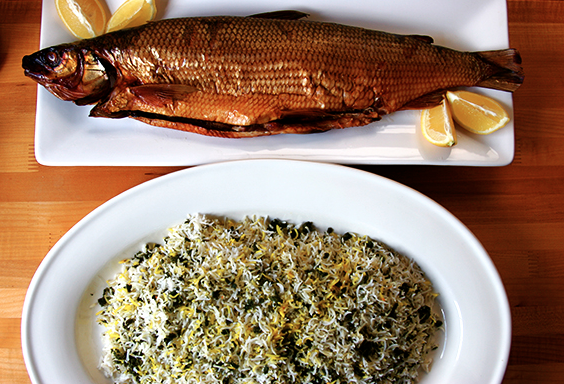
On Sunday, March 23, from 2 to 9 pm, the Iranian Cultural Foundation will welcome visitors to a Nowrūz celebration held at the Stafford Arts & Convention Center (10505 Cash Road, Stafford, Texas). There will be a merchandise bazaar, music, a children’s area and of course the haft-seen table will be set. Tickets are $25 at the gate, and children under 10 are admitted free. For more information, call 713-590-9770.
Nowrūz Pirooz – Wishing you a prosperous New Year!

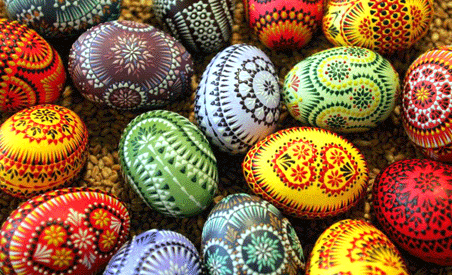

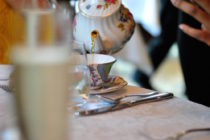
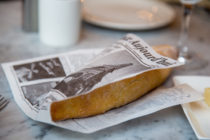
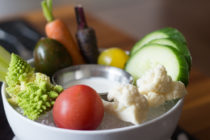

Follow Us